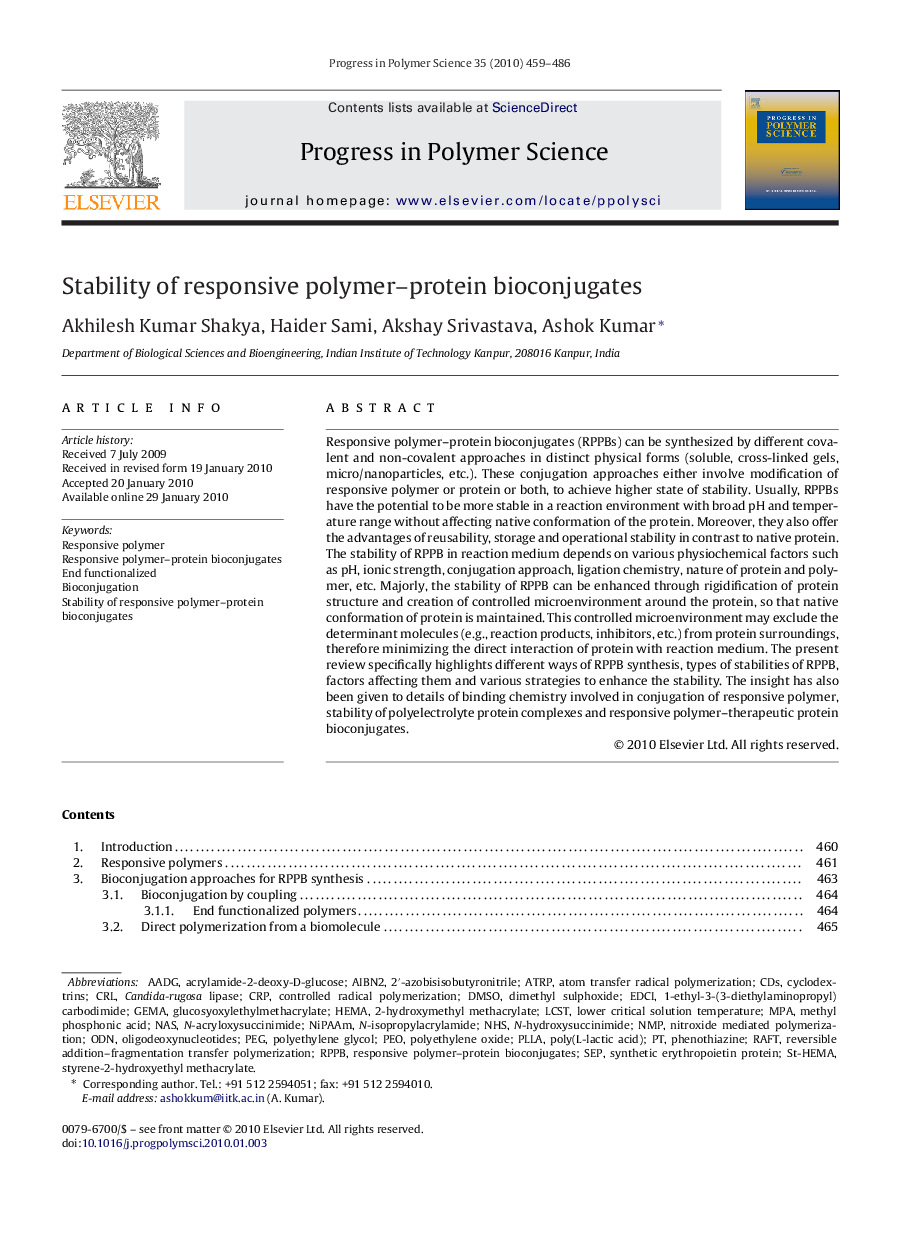| Article ID | Journal | Published Year | Pages | File Type |
|---|---|---|---|---|
| 5208715 | Progress in Polymer Science | 2010 | 28 Pages |
Abstract
Responsive polymer-protein bioconjugates (RPPBs) can be synthesized by different covalent and non-covalent approaches in distinct physical forms (soluble, cross-linked gels, micro/nanoparticles, etc.). These conjugation approaches either involve modification of responsive polymer or protein or both, to achieve higher state of stability. Usually, RPPBs have the potential to be more stable in a reaction environment with broad pH and temperature range without affecting native conformation of the protein. Moreover, they also offer the advantages of reusability, storage and operational stability in contrast to native protein. The stability of RPPB in reaction medium depends on various physiochemical factors such as pH, ionic strength, conjugation approach, ligation chemistry, nature of protein and polymer, etc. Majorly, the stability of RPPB can be enhanced through rigidification of protein structure and creation of controlled microenvironment around the protein, so that native conformation of protein is maintained. This controlled microenvironment may exclude the determinant molecules (e.g., reaction products, inhibitors, etc.) from protein surroundings, therefore minimizing the direct interaction of protein with reaction medium. The present review specifically highlights different ways of RPPB synthesis, types of stabilities of RPPB, factors affecting them and various strategies to enhance the stability. The insight has also been given to details of binding chemistry involved in conjugation of responsive polymer, stability of polyelectrolyte protein complexes and responsive polymer-therapeutic protein bioconjugates.
Keywords
PLLAGEMAN-acryloxysuccinimideOligodeoxynucleotidesEDCILcstN-hydroxysuccinimideNMPCRLSEPNHSODNMPANASBioconjugationN-IsopropylacrylamideATRPDMSOAtom transfer radical polymerizationPolyethylene oxideLower critical solution temperaturedimethyl sulphoxideRAFTcyclodextrinsNIPAAmPhenothiazineHEMACRPPoly(L-lactic acid)polyethylene glycolResponsive polymerControlled radical polymerizationNitroxide mediated polymerizationPEGPEOCdS
Related Topics
Physical Sciences and Engineering
Chemistry
Organic Chemistry
Authors
Akhilesh Kumar Shakya, Haider Sami, Akshay Srivastava, Ashok Kumar,
